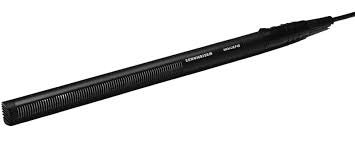
Resetting an HP laptop is a valuable skill, whether you’re troubleshooting, preparing to sell your device, or starting fresh. This comprehensive guide walks you through various reset methods, ensuring you can confidently and safely reset your HP laptop.
Introduction
Understanding how to reset your HP laptop is essential for addressing a range of issues, from performance lags to preparing the device for a new user. Resets can range from simple reboots to complete factory resets, each serving a specific purpose.
Preparation
Back Up Your Data: Before resetting, back up all important files. Use external drives, cloud storage, or any preferred backup method to safeguard your data. This step is crucial as a factory reset will erase all data from the laptop.
Ensure Power Supply: A constant power supply is vital during the reset process. Ensure your laptop is plugged in to avoid interruption, which can lead to severe issues like data corruption.
Different Types of Resets
Soft Reset: A basic restart of your laptop, useful for minor issues like application crashes or slow performance. It doesn’t affect files or settings.
Hard Reset: This involves powering off your laptop and restarting it, which can solve hardware-related issues. It doesn’t erase data but can reset hardware configurations.
Factory Reset: A comprehensive reset that returns your laptop to its original state, as it was when you first bought it. This process erases all data, including files, applications, and settings.
Step-by-Step Guide to Soft Reset
- Close all applications.
- Click on the ‘Start’ menu.
- Select ‘Power’ and then ‘Restart.’
- Wait for the laptop to reboot.
Step-by-Step Guide to Hard Reset
- Turn off the laptop.
- Disconnect all peripherals and the power source.
- If your laptop has a removable battery, take it out. Press and hold the power button for 15 seconds, then reinsert the battery.
- Reconnect the power source and turn the laptop on.
Step-by-Step Guide to Factory Reset
- Backup your data.
- Go to ‘Settings’ > ‘Update & Security’ > ‘Recovery.’
- Under ‘Reset this PC’, click ‘Get started.’
- Choose either ‘Keep my files’ or ‘Remove everything.’
- Follow the on-screen instructions to complete the process.
Factory Reset Options
- Keep My Files: Removes apps and settings but keeps your personal files.
- Remove Everything: Deletes all personal files, apps, and settings. Ideal for selling your laptop or resolving serious issues.
Post-Reset Setup
After resetting, set up your Windows operating system, reinstall necessary applications, and restore your backed-up data. Ensure all drivers are updated for optimal performance.
Troubleshooting Common Issues
Issues During Reset: If the laptop fails to reset or gets stuck, try booting in Safe Mode or using HP Recovery Manager (for older models). If problems persist, professional help may be required.
Post-Reset Problems: Ensure all drivers are updated. If certain functions aren’t working, downloading specific drivers from the HP website can resolve these issues.
Additional Tips and Warnings
Regular Maintenance: Post-reset, regular maintenance like software updates and hardware checks can keep your laptop running smoothly.
Data Loss: A factory reset irreversibly erases data. Double-check backups before proceeding.
Conclusion
Whether you need a simple reboot or a complete factory reset, understanding how to reset your HP laptop is crucial. Always back up your data and ensure a stable power supply before initiating a reset. While resets can be a quick fix for many issues, they’re also a serious step, especially in the case of a factory reset. Follow these guidelines to ensure a smooth and safe reset process.





